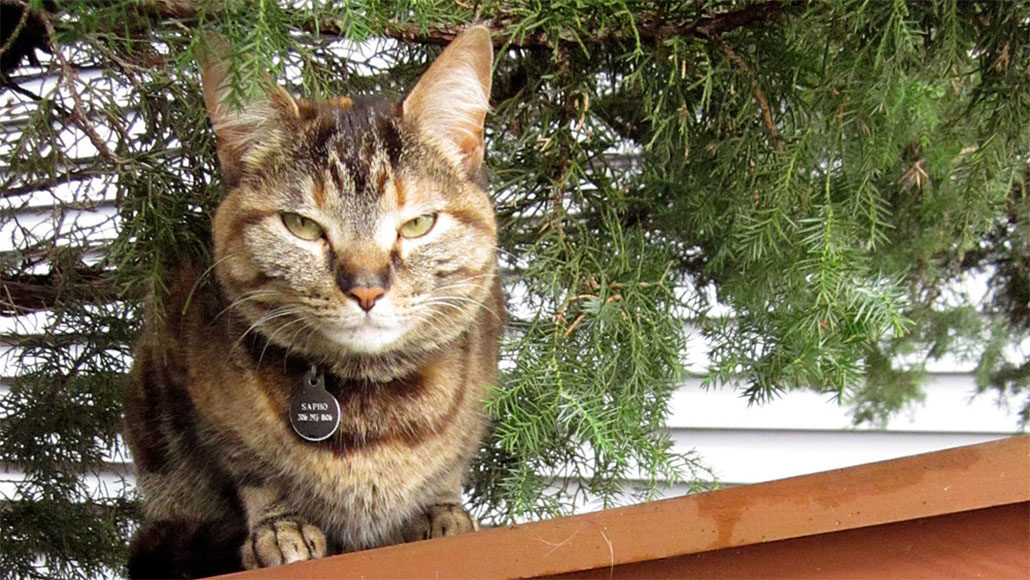Killer cats
Puss may pose the single biggest threat to birds

Cats kill between 1.4 billion and 3.7 billion birds every year in the United States, according to a new study.
Emily Krieger
Birds of the world, beware: Living among humans can be dangerous. Fliers often become confused by the near-invisibility of window glass and crash into houses and tall buildings. Some larger birds may be poisoned when they feed on carcasses tainted with lead from shotgun pellets. But the really big killer: Puss.
Cats kill between 1.4 billion and 3.7 billion birds every year in the United States alone, a new report concludes. That’s nearly a billion more birds — at least — than estimated by some previous studies, Peter Marra told Science News. This research scientist, who works at the Smithsonian Conservation Biology Institute in Washington, D.C., led the new study.
As every cat owner soon learns, felines are born hunters. So any that spend at least some time outdoors will find it almost impossible to ignore the chance to chase, catch and play with moving animals. (Some cats also enjoy eating these animals when the play is over.)
The researchers collected data on both pet cats and feral, or wild, cats. Feral cats and cats that spend all of their time outdoors account for most of the U.S. bird deaths, between 952 million and 3.1 billion birds every year. The researchers described their calculations in a Jan. 29 report published in Nature Communications.
“The results are remarkable, not only for the big number, but also for the proportion of deaths from feral cats,” Gary M. Langham told Science News. He’s the chief scientist for the National Audubon Society and did not work on the new study.
And birds aren’t cats’ only victims. Each year they also snag and kill between 6.9 billion and 20.7 billion wild mammals (such as mice), the researchers calculated.
It’s difficult to count how many potential prey animals live on the ground or in the air. Marra and his team didn’t go out and count cats and dead birds. Instead, they analyzed existing studies to estimate how many cats live in the United States. (About 114 million, 84 million of which are housecats.) They also studied existing data on the hunting habits of cats and the likely number of animals they might pick off when outdoors for a certain amount of time.
Some scientists find the new dead-bird estimates alarming. “This huge problem awaits a practical and widely acceptable solution,” Stanley Temple told Science News. Temple, a conservation biologist at the University of Wisconsin–Madison, did not work on the new study.
Any long-term solution will be controversial. Some people propose catching wild cats and neutering them, which means performing minor surgery to make them unable to reproduce. That won’t make them kill fewer animals. But it will slow the increase in number of these natural-born killers. Others people have proposed catching and killing feral cats.
Some critics argue that these plans won’t do enough to spare wildlife from feline hunters. And still others suspect Marra’s study greatly overestimates the actual death toll due to cats.
Marra welcomes such discussions. He says he hopes his team’s analyses start a conversation about how to handle cats responsibly — and not just a fight between conservationists and cat lovers. After all, he notes: “You’ve got people who love animals on both sides.”
Power Words
carcass The body of a dead animal.
conservation The act of preserving or protecting the natural environment.
biology The study of living things.
estimate An approximate calculation. It is often used because exact numbers are unavailable or almost impossible to acquire.
neuter Lacking developed sexual organs, or having had them removed.







